Trading Zoo: Why We Use Animals to Describe the Stock Market
The market has its own zoo. Bulls, bears, chickens and more — each one represents a type of trader. Find out which one you are.
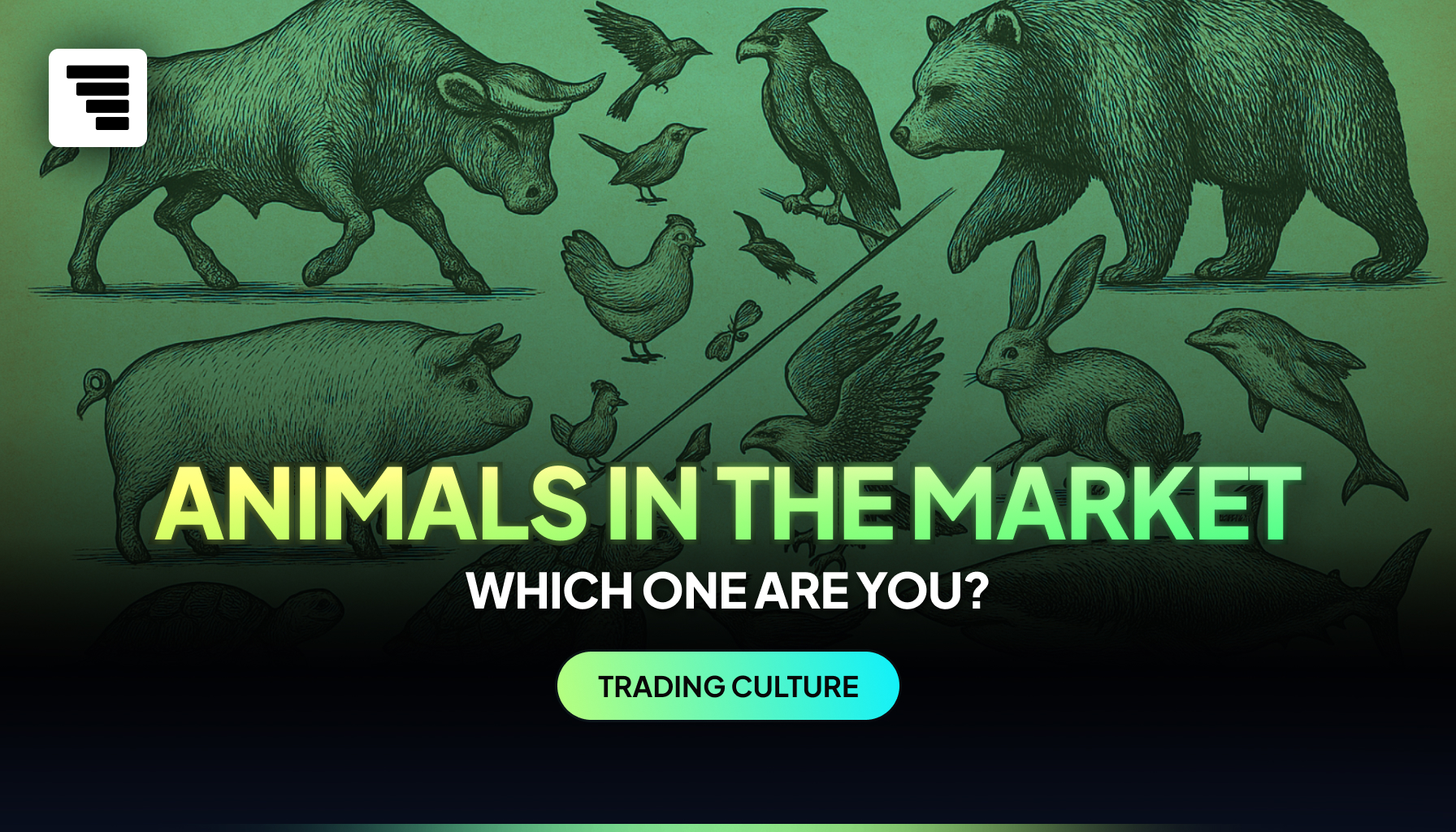
So what’s the deal with stock market animal symbols? The answer is more primal than you might think.
Long before the stock market existed, people used animals to explain storms, seasons, luck, and rebirth. We saw strength in bulls, fear in sheep, cunning in wolves — imagery that later shaped the financial markets.
Today’s animals of the stock market aren’t just nicknames. They’re shorthand for trader psychology, market risks, and investment styles. Beneath the numbers, the market runs on emotion and instinct, which shape market conditions and thus stock prices.
Let’s meet them properly.
Meet the Animals of the Market

Each animal mirrors a mindset: a strength, a flaw, a survival trait. Spotting which one you’re channelling might reveal the habits holding you back — or the edge you’ve been ignoring.
Bulls and Bears: The Titans
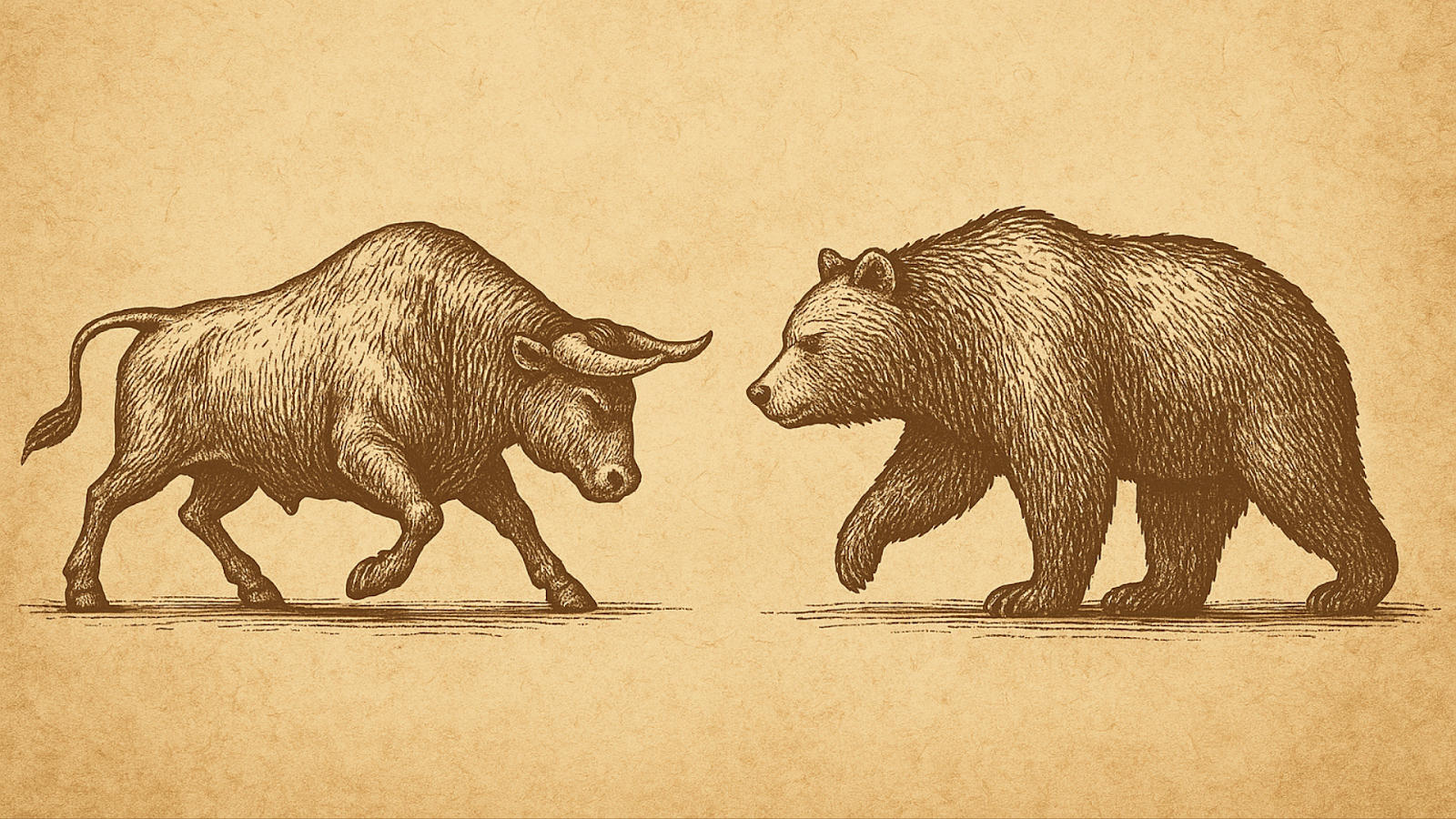
They’re the most well-known trading animals — and for good reason. Bulls and bears aren’t just metaphors. They represent the constant push and pull of optimism and fear, growth and decline, that define a bull or bear market.
Bulls charge upward, symbolising confidence, growth, and buyers who believe assets — from share prices to cryptos and forex pairs — will rise in value. The upward thrust of a market mirrors a bull’s horns, so we refer to a growing stock market as a bull market.
Bears drag down, representing caution, pessimism, and sellers who expect falling prices. Just like a bear’s claws swiping downward, a sustained downward trend is called a bear market.
Together, bulls and bears shape market trends – the sun and moon of trading.
Pigs, Sheep, Wolves & Stags: The Herd
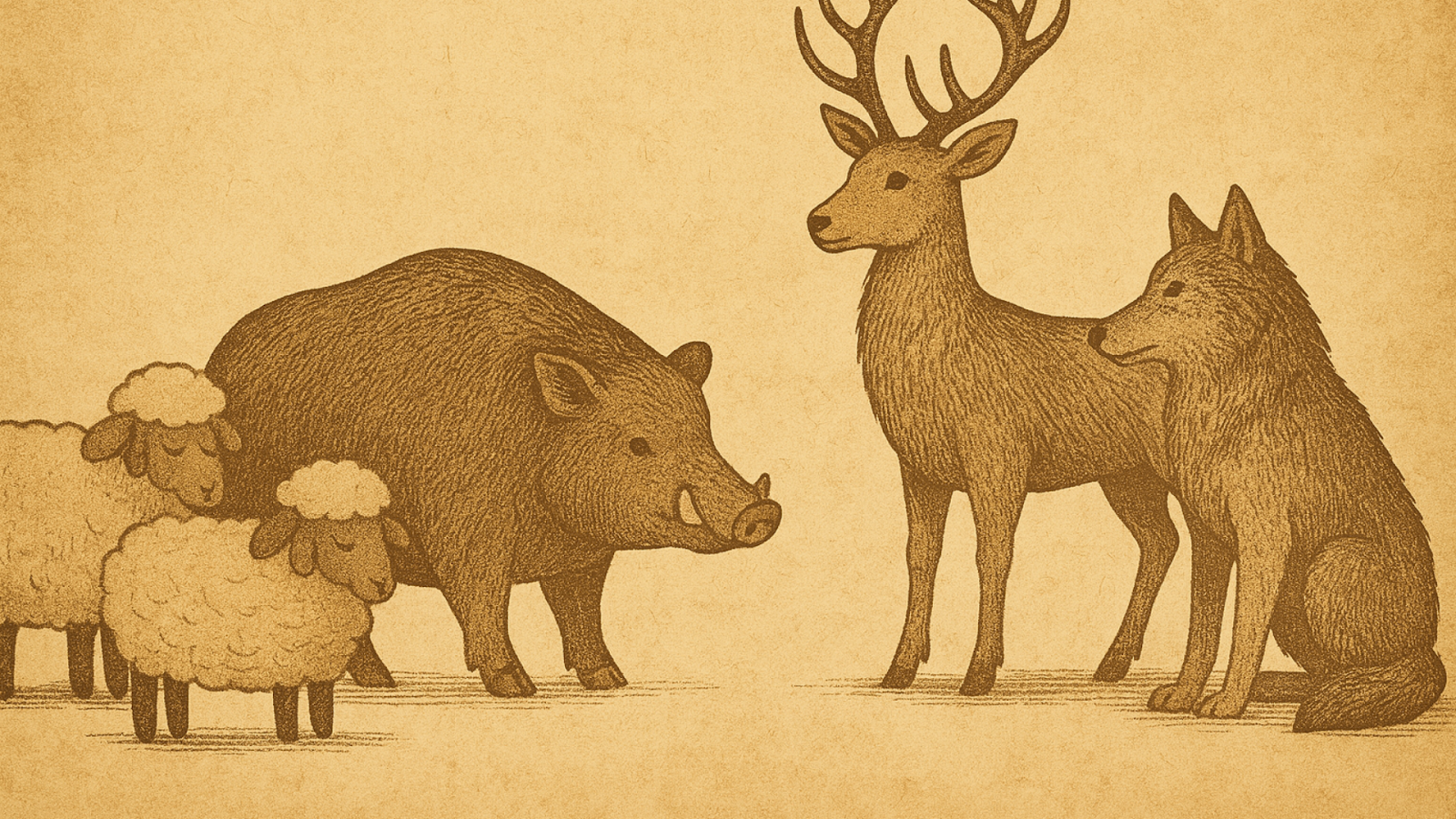
Not every trader acts alone. Many move as part of a group, driven by emotion, pressure, or opportunity. Some get trampled. Some lead the way.
Pigs are greedy. They overtrade, chase quick wins, and risk more money than they can afford to lose. There’s even a saying for this in the stock market: “Greedy pigs get slaughtered.”
The lesson? Don’t get greedy.
Sheep have a herd mentality and often copy others blindly, without understanding the trade position. In the wrong market scenario, this behaviour can derail even well-planned investment strategies.
Wolves are cunning. They are sensitive to shifting market conditions, and often profit when less experienced traders are losing. For example, wolves may profit during a bear market by short selling overvalued stocks.
Stags buy into new company listings — called IPOs (Initial Public Offerings) — hoping to sell their shares quickly for a fast profit. They don’t plan to hold it long-term. It’s a quick in-and-out move.
The Birds of Trading
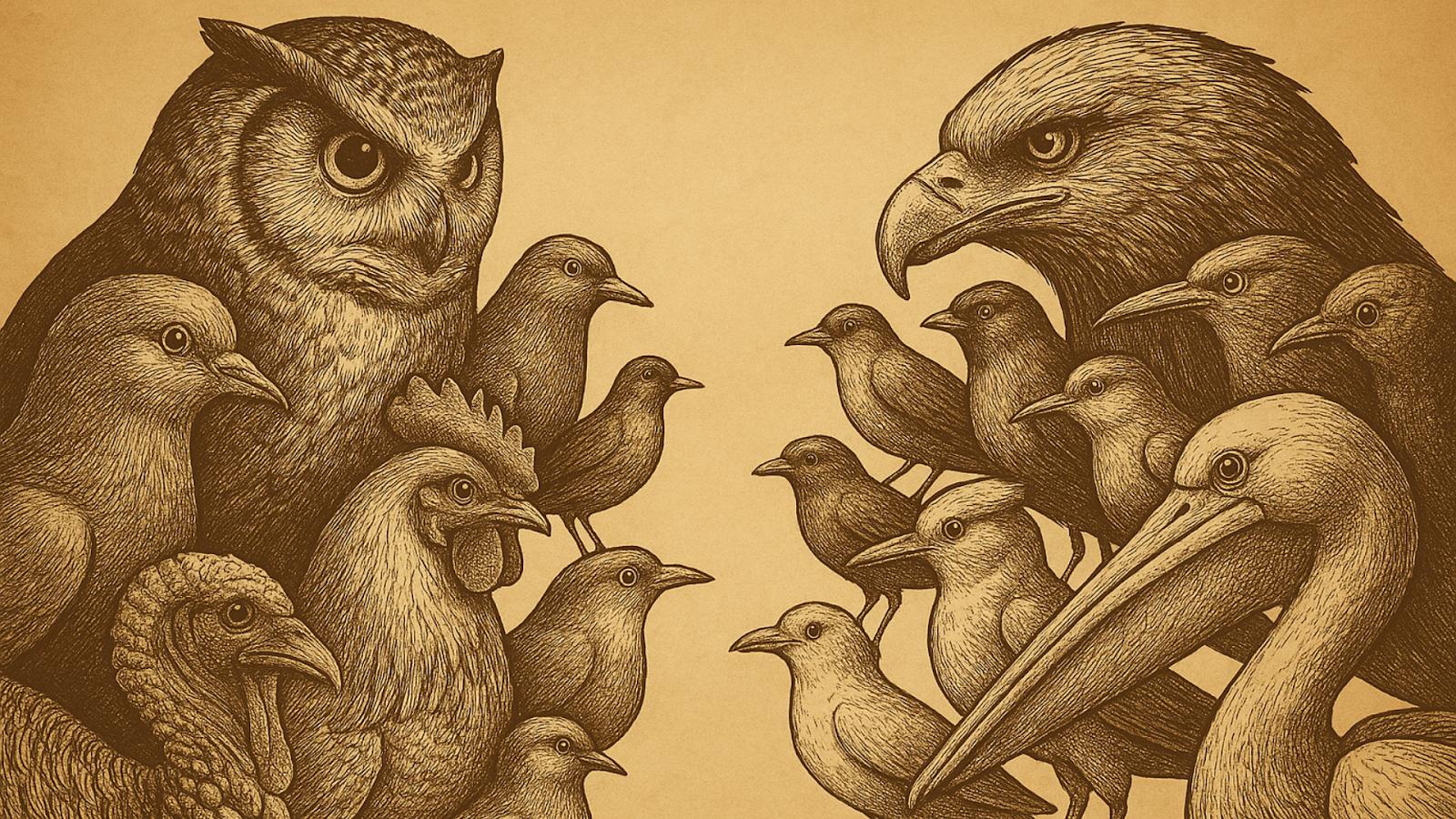
Not all market participants hunt or graze — some fly high and influence from above. From central bankers to risk-averse sideliners, these birds reflect how traders and policymakers respond to fear, risk, and control.
Hawks are aggressive. They favour higher interest rates and tight monetary policy to fight inflation, often creating opportunities in currency trades and higher-yield government securities.
Doves are soft. They support low interest rates and economic stimulus to promote growth, conditions that can boost equities and encourage more risk-taking in the securities market.
Ostriches avoid reality. Like ostriches, some investors ignore negative news until it’s too late to withdraw from a negative trade position.
Chickens are easily spooked. They dislike volatility, and may prefer investing in low risk investments or staying on the sidelines (via parking their funds in bank deposits) until conditions stabilise.
Lame Ducks are struggling. They’re often stuck in bad trades, poor decisions, or near-liquidation positions; the biggest losers in trading.
Bats and Butterflies might not be birds, but they’re still flying critters. They refer to harmonic patterns in technical analysis. While not tied to the psychology of a trader, they show how deep the animal theme runs in trading — even into chart structure.
Turtles and Rabbits: The Patient and The Speedy
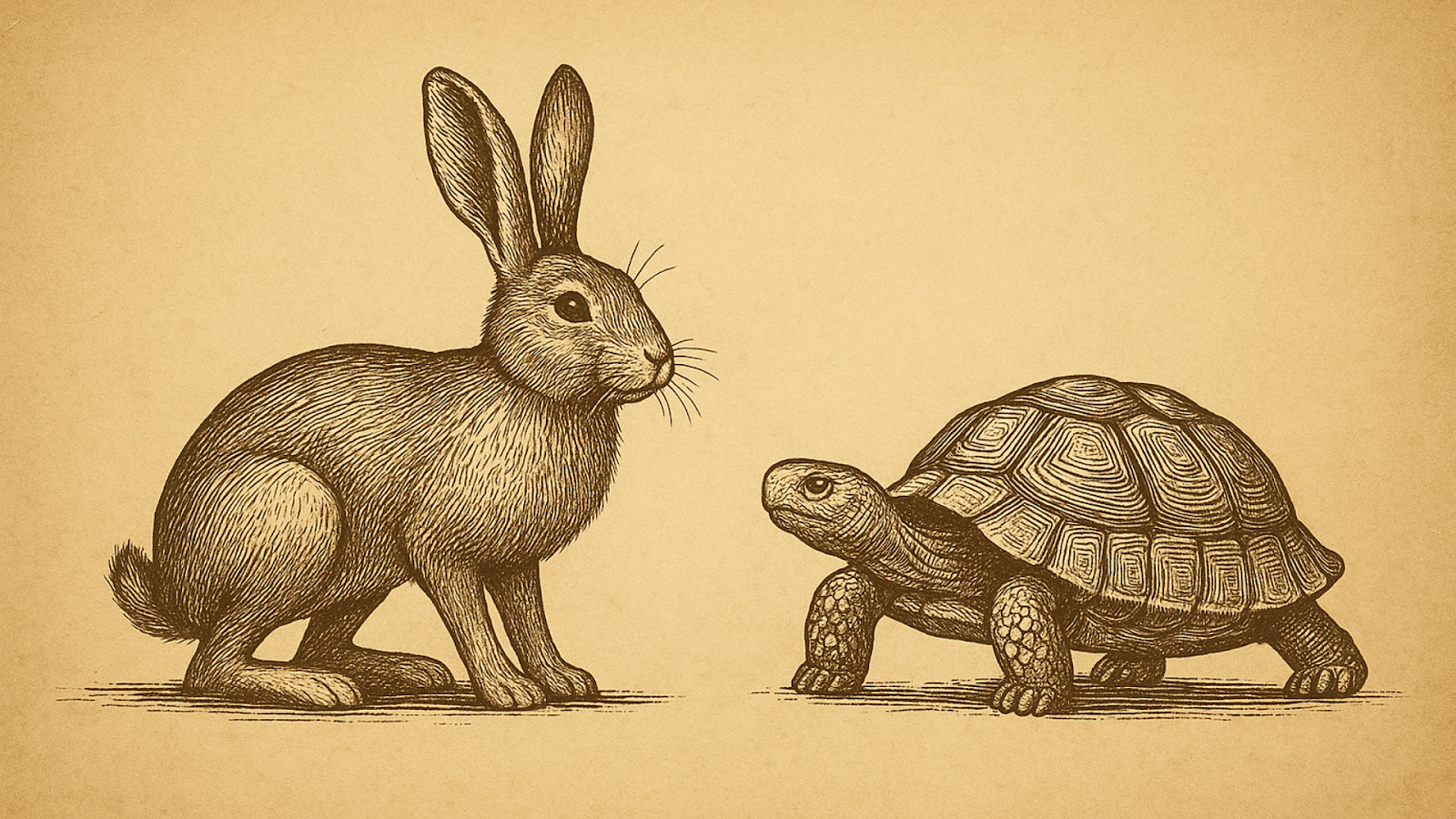
One moves slow and steady, the other dashes in and out. Both have their place in the market, but only one tends to finish the race with consistency.
Turtles lean on disciplined investment strategies that can weather volatility. They trade slowly, often using long-term growth plans and building a diversified investment portfolio.
Many also set aside capital in low risk investments, such as bank fixed deposits or a conservative bank fixed portfolio, to protect against downturns. Inspired by the famous Turtle Traders experiment from the 1980s, their edge lies in discipline and patience.
Rabbits are fast. They enter and exit trades quickly, often chasing short term fluctuations without focusing on the long-term prospects of a stock. While nimble, they can be reckless if not careful.
Whales and Sharks: Rulers of the Sea
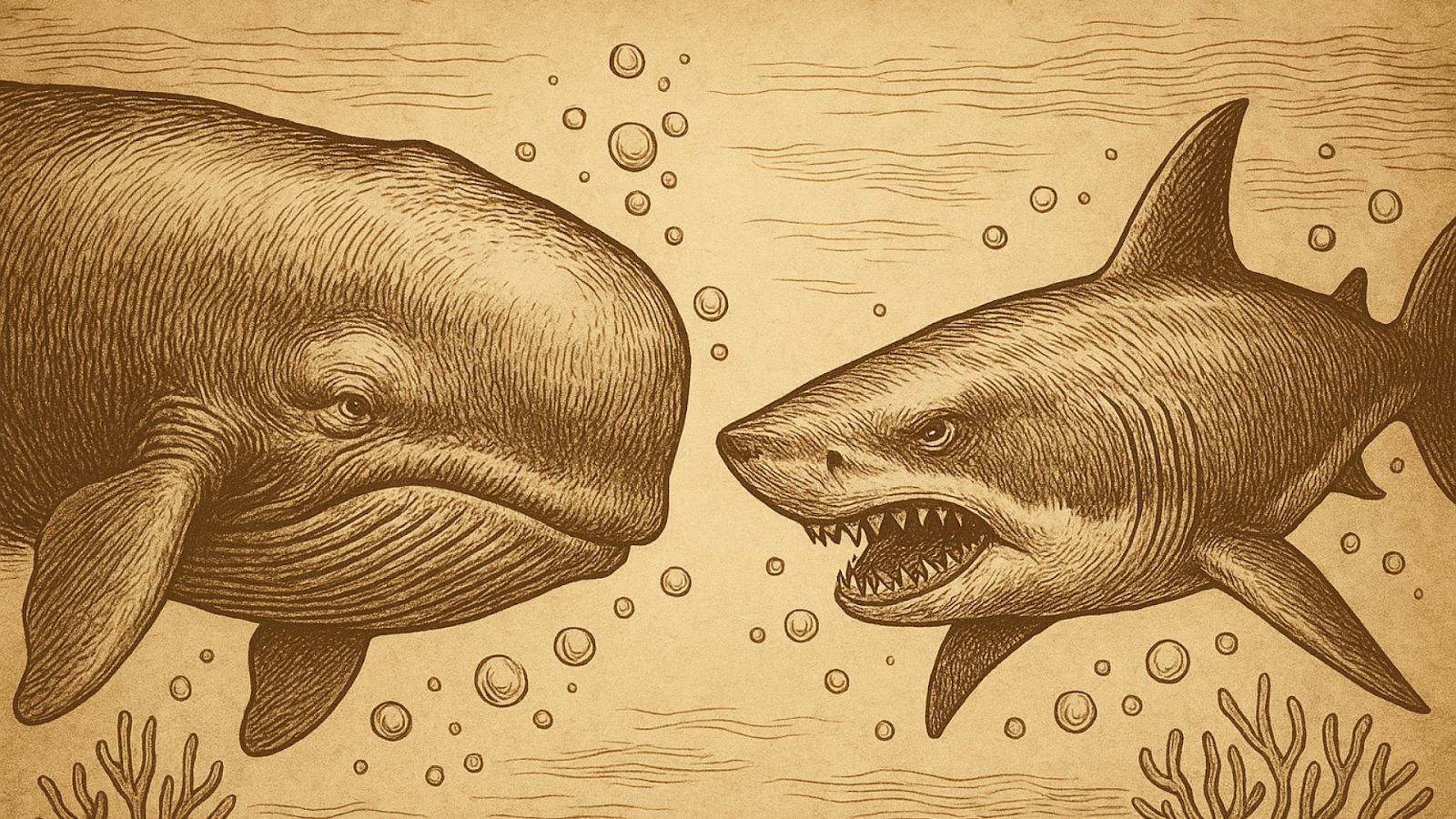
Beneath the surface of the market swim its biggest influencers — and its most dangerous threats. These creatures rule with size, stealth, or manipulation. Spotting them is key to navigating the treacherous waters of Wall Street and the London Stock Exchange.
Whales are market movers. These are the big players with huge capital — institutions, hedge funds, or elite individuals. Their trades can shift prices due to their sheer size.
Sharks are the predators of the financial world. They make money with unethical means. Often linked to stock market scams such as pump-and-dump schemes that exploit naive traders.
Crabs move sideways, just like certain markets. The term refers to periods of low volatility, where price drifts aimlessly without clear direction.
Seahorses are rare mentions, but sometimes used to describe small, fragile market participants who drift with the current, often unnoticed but still affected by big moves.
Closing the Cage: What Kind of Animal Are You?
Every animal in the trading zoo represents a mindset or behaviour pattern. Some are cautionary tales. Others are aspirational. Together, they help us simplify the chaos of the markets into something we can observe, relate to, and learn from.
So, what kind of animal are you when it comes to trading?
FAQ
What other animal terms are there in trading?
Trading slang goes well beyond the usual bulls and bears. Markets have a whole menagerie of expressions that describe rare events, risky moves, and profit machines.
- Dead Cat Bounce – A short-lived rebound in a bigger downtrend.
- Wolf of Wall Street – A bold, high-risk trader or broker.
- Black Swan – A rare, unpredictable event with major impact.
- White Swan – A foreseeable, well-anticipated event with limited surprise.
- Cash Cow – A steady profit-generating asset.
Which animals represent a positively growing stock market?
Bulls, Whales, and Doves typically represent positive sentiment, strong buying pressure, and optimism. Bulls push prices higher, Whales move markets with big volume, and Doves foster favourable economic conditions through supportive policies.
Which animals represent a declining stock market?
Bears, Ostriches, and Lame Ducks signal negativity or weakness. Bears dominate during downtrends, Ostriches ignore danger instead of adapting, and Lame Ducks are stuck in bad trades or nearing collapse.
What animal should you try to emulate as a trader?
Ideally, a trader should blend the Turtle’s patience, the Wolf’s analytical edge, and the Bull’s conviction — while avoiding the recklessness of the Pig or the fear of the Chicken.
Is it bad to be a rabbit in the market?
Not necessarily. Fast in-and-out trades can work — if they’re backed by a strategy. But without risk control, rabbits often burn out chasing short-term moves.
Why are there so many animal metaphors in finance?
Animals make complex behaviours easier to understand. They simplify abstract market forces into characters we can visualise — like greed, fear, caution, or aggression.
Can a trader shift between animal mindsets?
Absolutely. You might start as a Sheep, evolve into a Turtle, and eventually develop traits of a Bull or Wolf. Awareness is the first step to growth.





